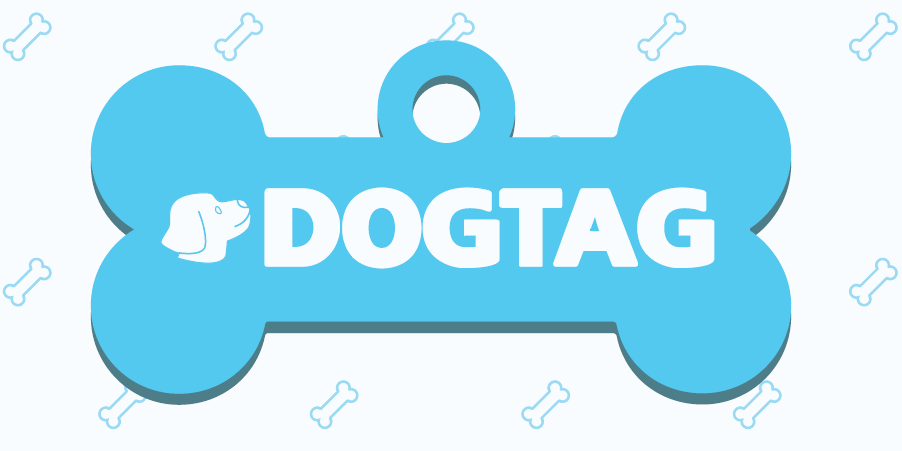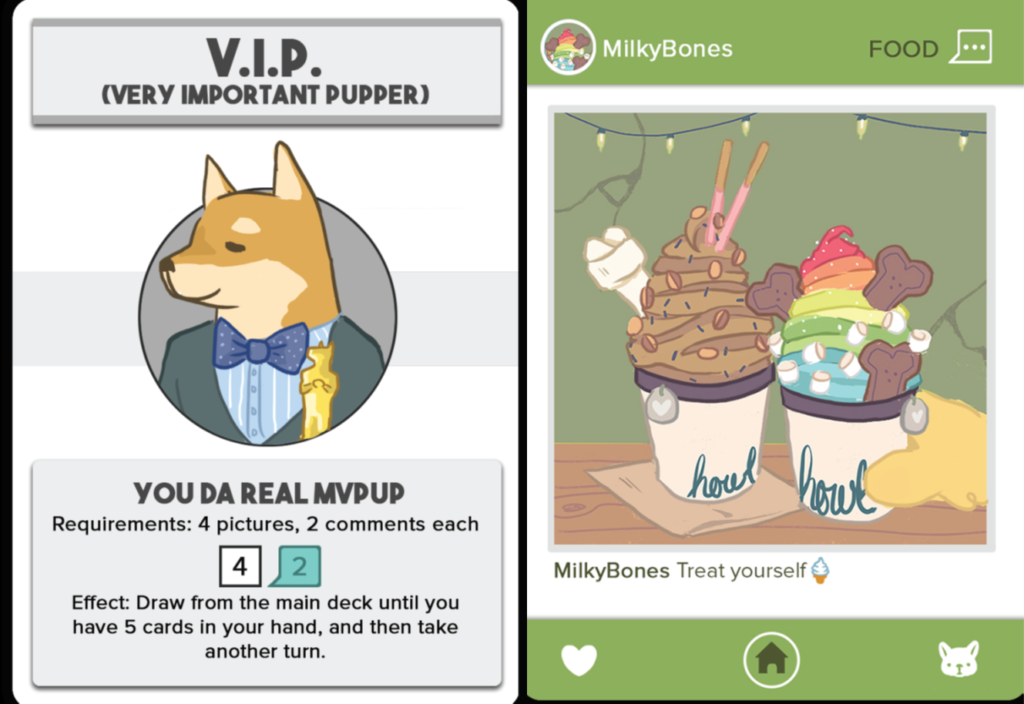I can’t ever picture myself not being a dog owner. I’ve owned more cats than dogs, but cats can be jerks when they want to be. Dogs are just so loyal and easy to please and depending on the breed, they’ll follow you EVERYWHERE! If you like dogs as much as I do, then you may want to look at “Dogtag”, a successful Kickstarter project that is now retailing for $25.00. It supports 2-5 players, is appropriate for ages 8+, and the average play time is 20-40 minutes. Special thanks to Marketing & Development Manager Christian Miyamae for sending me a copy of the game for review purposes. FCC Regulations require me to disclose that this article is sponsored, though my opinions are my own.

The game includes 15 Achievement Cards, 30 Picture Cards (6 of each of the 5 types), 44 Action Cards, and a rulebook.
So, how does Doggo do a heckin’ play?
Achievement cards are shuffled and a number of them are dealt face-up for all to see. In a two player game, five are dealt and in a three to five player game, six are dealt. The main deck (the picture and action cards) is shuffled and each player gets five cards to form their starting hand. The player with the most recent social media post goes first.
The goal of “Dogtag” is to take achievement cards. In a two player game, players take them and do not replace them. In a three to five player game, the first three achievement cards are not replaced as they are taken. From then on however, the count remains at three by drawing from the achievement deck as they are taken. Achievement cards can be taken by discarding the required cards from your picture board. Achievement cards also have bonuses that can help you throughout the rest of the game!
There are thirty picture cards in the main deck and consist of five types: Crew (yellow), Fashion (pink), Food (green), Fitness (purple), and Self (blue). Players will be adding these cards to their picture board and then discarding combinations in order to gain achievement cards. Player picture boards have a five picture limit, forcing a player to discard an existing picture card when attempting to add one to a full board.
Action cards can be used in two different ways: during the Open Face phase or during the Posting phase of a player’s turn. The card will tell you what action to carry out based on the current phase.
Comment cards make up about half of the action card deck. During the Open Face phase, you’ll be forced to place them on an opponent’s picture card. During the Posting phase, you can play one on one of your own picture cards. Comments stay attached to picture cards unless deleted by the Flag! action card. When a picture has five comments it will go viral and the player immediately draws two cards. It can go viral multiple times of the comments drop below five then reaches five again in the future.

On a player’s turn, they’ll first draw a card from the main deck and play it face up (Open Face Phase). If it’s a picture card, they’ll play it on their picture board. If it’s an action card, the player will choose an opponent who will then carry out the Open Face action (usually to the active player’s detriment). Next, the active player draws two cards into their hand and can play up to three cards (Posting Phase). Again, the idea here is to get picture cards onto your picture board and then trade them in for achievement cards. The first player to grab three achievement cards wins the game.
Editor’s Note: The above doesn’t cover all of the rules found in the rulebook but should give you an idea as to how the game is played.
“Dogtag” turned out to be both a clever and casual set collecting game. I wholeheartedly approve of the theme, what with me having a soft spot for animals and all. As such it is appropriate for just about any age and since there are no smaller pieces to “eat”, children of younger ages can enjoy this with the appropriate parental supervision. Kids and adults alike will no doubt get a chuckle or two out of some of the doggo-themed flavor text and card art. Play time is relatively quick too, which is a bonus for busy kid-parents/fur-parents.
With that said, the game can rely a bit on luck, which to be fair is expected in a casual card game such as this. The obvious mention here (which I don’t have a problem with) involves getting the right combination of cards onto your picture table to complete achievements. For example, one achievement card might task you with getting four pictures with two comments each. Another might have you collect one picture of each color. I can live with that.

What I have a hard time accepting, mainly for balance purposes, is that there are occasions where the Open Face phase will help you (if you draw a picture card) and hurt you (if you draw an action card). It’s possible for a player to draw picture card after picture card throughout the game while another keeps getting action cards. Since the main deck is roughly 40.5% picture cards…well, there’s a good chance that RNG (short for random number generator) may be unkind to you.
As I stated previously, casual card games such as this tend to have some sort of luck element to it. I have a feeling that players won’t mind the “RNG” if they go into this game looking to have fun and not with the mindset of hungry, bloodthirsty Klingons looking for a sparring partner. $25 is the MSRP on the official website and admittedly, that’s $5-10 higher than the price of your average card game. If you don’t mind paying the extra five bucks however, “Dogtag” will deliver a heckin’ good time, fren. No bamboozle!
Editor’s Note 8/30/18: I’m told that the retail price in stores will be $20.
Final Verdict: 7/10
—
